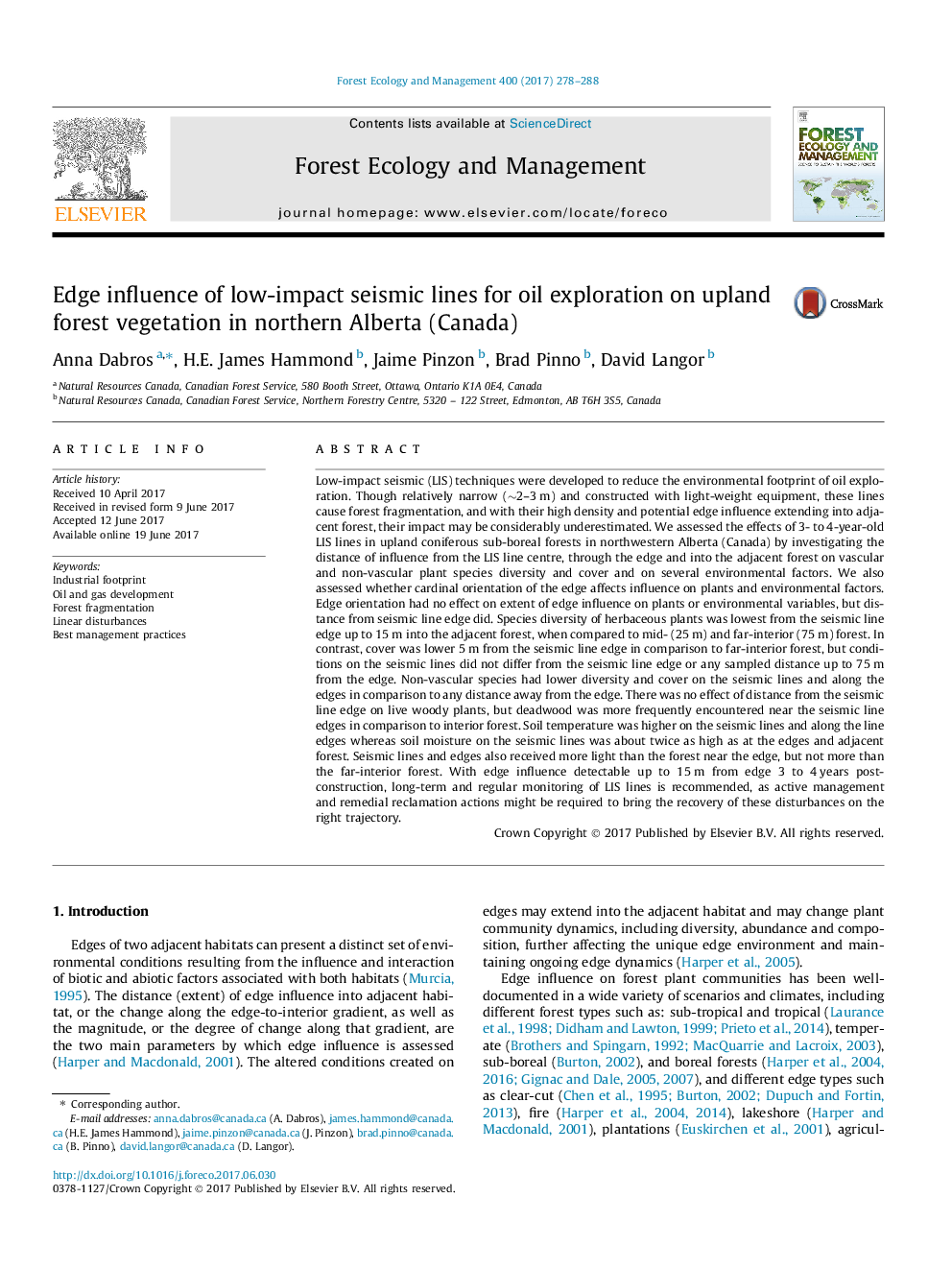| کد مقاله | کد نشریه | سال انتشار | مقاله انگلیسی | نسخه تمام متن |
|---|---|---|---|---|
| 6459246 | 1421358 | 2017 | 11 صفحه PDF | دانلود رایگان |
- Low impact seismic lines cause significant edge influence on ecological factors.
- Reduced herbaceous and non-vascular vegetation on lines, edges, and/or near edges.
- Reduced solar radiation reaching the ground near edges (5Â m away)
- Higher soil temperature, moisture, and coarse woody debris on lines and/or edges.
- No effect of edge orientation on extent of edge effects.
Low-impact seismic (LIS) techniques were developed to reduce the environmental footprint of oil exploration. Though relatively narrow (â¼2-3Â m) and constructed with light-weight equipment, these lines cause forest fragmentation, and with their high density and potential edge influence extending into adjacent forest, their impact may be considerably underestimated. We assessed the effects of 3- to 4-year-old LIS lines in upland coniferous sub-boreal forests in northwestern Alberta (Canada) by investigating the distance of influence from the LIS line centre, through the edge and into the adjacent forest on vascular and non-vascular plant species diversity and cover and on several environmental factors. We also assessed whether cardinal orientation of the edge affects influence on plants and environmental factors. Edge orientation had no effect on extent of edge influence on plants or environmental variables, but distance from seismic line edge did. Species diversity of herbaceous plants was lowest from the seismic line edge up to 15Â m into the adjacent forest, when compared to mid- (25Â m) and far-interior (75Â m) forest. In contrast, cover was lower 5Â m from the seismic line edge in comparison to far-interior forest, but conditions on the seismic lines did not differ from the seismic line edge or any sampled distance up to 75Â m from the edge. Non-vascular species had lower diversity and cover on the seismic lines and along the edges in comparison to any distance away from the edge. There was no effect of distance from the seismic line edge on live woody plants, but deadwood was more frequently encountered near the seismic line edges in comparison to interior forest. Soil temperature was higher on the seismic lines and along the line edges whereas soil moisture on the seismic lines was about twice as high as at the edges and adjacent forest. Seismic lines and edges also received more light than the forest near the edge, but not more than the far-interior forest. With edge influence detectable up to 15Â m from edge 3 to 4Â years post-construction, long-term and regular monitoring of LIS lines is recommended, as active management and remedial reclamation actions might be required to bring the recovery of these disturbances on the right trajectory.
Journal: Forest Ecology and Management - Volume 400, 15 September 2017, Pages 278-288
